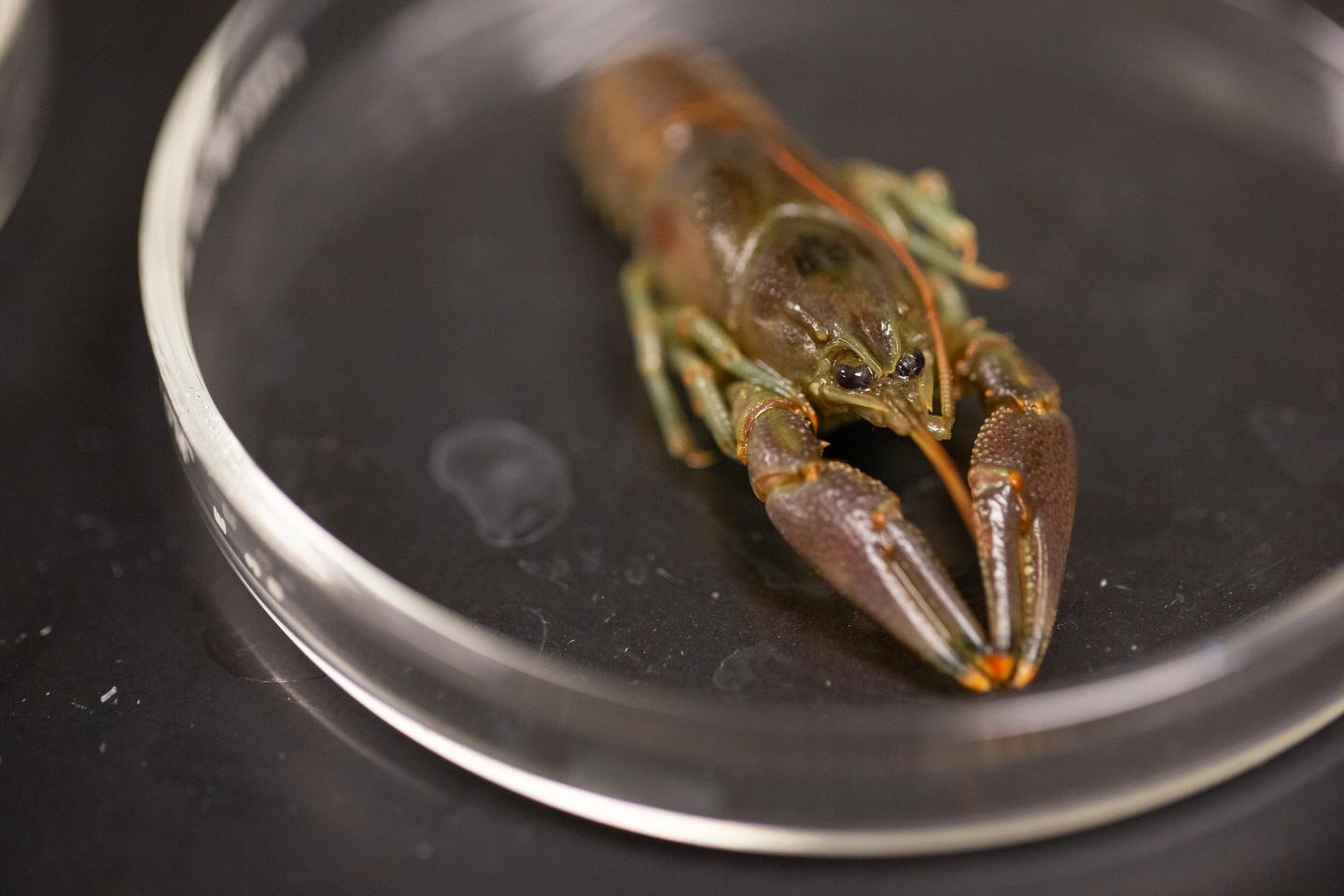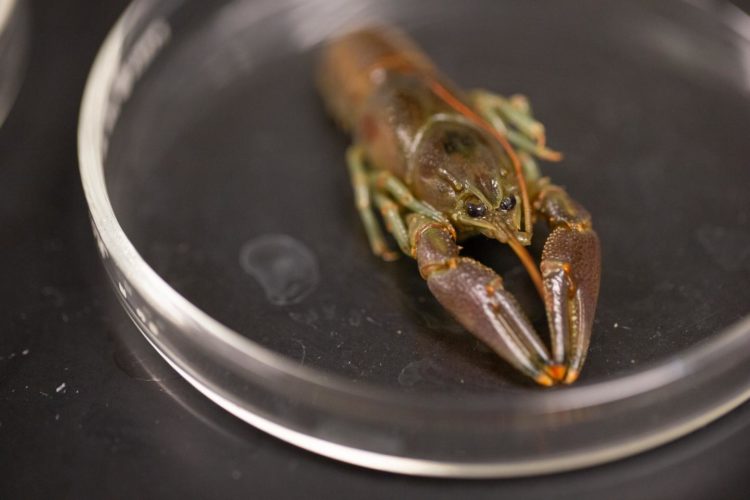The rusty crayfish is not a fussy eater, University of Cincinnati biologists found

Credit: Andrew Higley/UC Creative Services
An invasive species of crayfish that is taking over streams from Minnesota to Maine might be successful because it’s not a fussy eater, according to biologists with the University of Cincinnati.
In lab “taste tests,” this crayfish native to the Ohio River valley displayed no preference for protein or plants, even after weeks on an exclusive diet of one or the other, according to a new UC study. The crayfish has more cellulose-digesting bacteria when its diet is restricted to plants.
“They tend to be more aggressive than native crayfish,” said Mark Tran, a UC biologist who led the project. “They have relatively large claws compared to their body size. They will either force the other crayfish out or outcompete them for food.”
Tran and his colleagues presented findings from two studies at the Society for Integrative and Comparative Biology conference in January.
The rusty crayfish looks like a little bronze lobster with its thick body and formidable pincers. It is native to creeks and ponds in Ohio, northern Kentucky and Indiana.
Wildlife managers suspect fishermen who catch rusty crayfish for bait introduced them into streams as far away as Oregon and Canada, where they are outcompeting native crayfish and destroying fish nurseries with their ravenous appetites. According to the Minnesota Sea Grant, the hungry crayfish feed on aquatic vegetation along with invertebrates that baby fish eat.
“The irony is that bass fishermen are responsible for releasing them into waters where they end up reducing the native sportfish population,” said Tran, an assistant professor of biology for UC Blue Ash.
In Canada, Ontario took the extraordinary step of outlawing the transport of any crayfish anywhere in the province to try to stop the rusty crayfish from spreading. Fishermen there have to catch crayfish for bait in the same waters they fish.
“They tend to be opportunistic,” Tran said. “They will actively kill things and eat them. But in the streams we studied, they tend to be more omnivorous. They eat a lot of plant material and supplement it with dead fish or eggs they find.”
For the project, UC obtained a collection permit from the Great Parks of Hamilton County. Students collected 40 female crayfish from a suburban Cincinnati creek. Half were fed a plant-based diet; the others a meat-based diet.
After a month, the crayfish with the vegetarian diet had more cellulose-digesting bacteria compared to the meat-eating crayfish.
“Plants can be hard to digest because of their cell walls,” Tran said. “To get nutrients from the plants, they need bacteria in their gut that can digest that cell wall. Rusty crayfish have a digestive system that is good at breaking down the plant’s cell walls.”
After a month on the strict diet, the crayfish were presented a choice of protein- or plant-based food through plastic tubes in an experimental arena. During a second trial, students offered each crayfish the two food choices in its individual habitat container.
Surprisingly, researchers found variety is not the spice of life for crayfish. The crayfish expressed no statistically significant preference for one food over another in either experiment despite their monthlong restricted diet.
The findings support what is known about rusty crayfish – they are generalists that will eat almost anything, which helps to explain why they are so successful colonizing new habitats where they are introduced as invasive species.
“Unfortunately, rusty crayfish are well established in Ontario and cannot be eradicated,” said Jolanta Kowalski, a spokeswoman for the Ontario Ministry of Natural Resources and Forestry. “The introduction of the species occurred in the 1960s and they have become well established.”
This was the third year of UC’s crayfish project, which was conceived to give undergraduate students lab experience, associate professor Keen Wilson said.
“The point is to give students an introduction to a variety of biology specialties,” Wilson said.
“For example, I don’t go outside. I know that about myself, so I stick to lab work,” he said. “But you might not know that about yourself as a freshman. So you go out in the field and collect crayfish and say, ‘I’ll never do that again as long as I live.’ But you might love working in the lab or looking at the microbiology plates.”
###
Media Contact
Michael Miller
[email protected]
609-675-8616
Original Source
https:/






